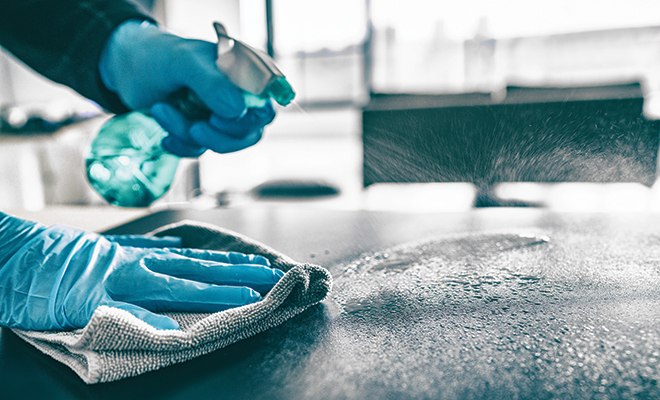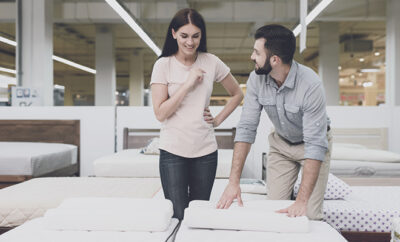
Spic and Span: Enough Protection for You and Your Family?
Communications bombard us about ensuring our homes are clean, not only to look nice but to protect the inhabitants from illness. Companies hope they can persuade us to choose their products with multi-million-dollar ad campaigns and slogans such as “stronger than dirt;” “kills 99.9 percent of viruses and bacteria;” “good for your family tree.”
W hile we’re instructed about what products to buy, our basic hygiene standards may be lacking because our lifestyles may inhibit proper procedures. Perhaps a busy schedule means less time cleaning critical areas such as kitchens and bathrooms. Overcrowding may be a problem, especially in your vehicles. Let’s not forget that Fido and Kitty could be dragging home more than you imagined. In addition, some family members could be more vulnerable to infection, posing a greater to risk to the rest of the family. The problem is elevated to a much higher level when a contagious virus such as COVID-19 is added to the equation. With Alpha, Beta, Omicron to morphing variants such as BA.2, BA.4 and BA.5 and potential future alphabets and numbers, the confusion can be overwhelming.
“What we need to emphasize right now is that cleaning and disinfection in the built environment, where people are and the virus can still circulate, is essential. Cleaning for health when someone who is sick or could be sick is not going to change, no matter what happens with this virus,” said Dr. Gavin Macgregor-Skinner BVSc, MSc, MPH, MRCVS, senior director, Global Biorisk Advisory Council, or GBAC. As an infection prevention expert and epidemiologist, Dr. Macgregor-Skinner works to develop protocols and education for the global cleaning industry and helps facilities, businesses, organizations and cleaning professionals create safe environments.
Dirty Surfaces, Dirty Air
The prominence of cleaning and disinfecting at home is critical to our well-being, especially during the current pandemic because most people stay home to get healthy or quarantine. Dr. Macgregor-Skinner notes the majority of those who become infected with COVID-19 experience mild to moderate symptoms. Hospitalization isn’t required, but the cleanliness of the homes in which we are quarantining is critical to every resident’s health.
“It is important that people understand there is a way to properly clean a room where a sick person may be currently quarantined, and in the future,” noted Dr. Macgregor-Skinner. “You need to understand that viruses can remain in the air and can fall out of the air onto surfaces in that room. Dirty air leads to dirty surfaces. Also, a dirty surface or contaminated surface will lead to ‘dirty air.’ We do know that viruses and bacteria survive outside of our bodies in the environment, not just for hours, but possibly for days and even weeks.”
Cleaning Up: The Right Products and Process
To protect yourself and your loved ones, you probably need to change your mindset about cleaning. It’s more than tidying up and wiping things down. Consider it a method that employs the right procedures and products for the room and surfaces you want to clean.
“Cleaning is a process, a procedure. It’s a strategy and important to prevent the transmission of any infectious agent, even COVID-19, in your home. First, focus on the methodology that’s backed by science and evidence. We must have clean surfaces first before we disinfect. That’s a best practice measure for the prevention of any infectious disease of any indoor space. We clean first to remove the germs, dirt and contaminants from surfaces,” stated Dr. Macgregor-Skinner. “We also need to understand that cleaning doesn’t kill or destroy the germs, it simply reduces the number of them on surfaces. Then we have to disinfect with products that have been registered by a governmental agency, such as the EPA in the U.S., which kills and destroys bacteria and viruses.”
The cleaning products that we’ve been pushed to buy can have solid value for us in our strategy to combat viruses and infectious diseases. However, we must read labels and follow directions to ensure that the products are used to their best advantage.
“You should wear gloves and a mask. Clean first, disinfect second. This is how you do it,” noted Dr. Macgregor-Skinner. “Read the label. It will say how long to leave the product on the surface. If not, you’re wasting time and wasting money.”
Sources: gbac.org.
The Expertise
Composed of international leaders, the Global Biorisk Advisory Council™, a Division of ISSA, provides training, guidance, accreditation, certification, crisis management assistance and leadership to government, commercial and private entities in how to keep the built environment healthy and safe from germs that cause infectious diseases. They provide education and training for professional cleaners and anyone who wants to clean their home using industry standards and evidence-based procedures. The goal is to provide information and general guidance on “How to Clean for Health” in an effort to protect homes and loved ones.







